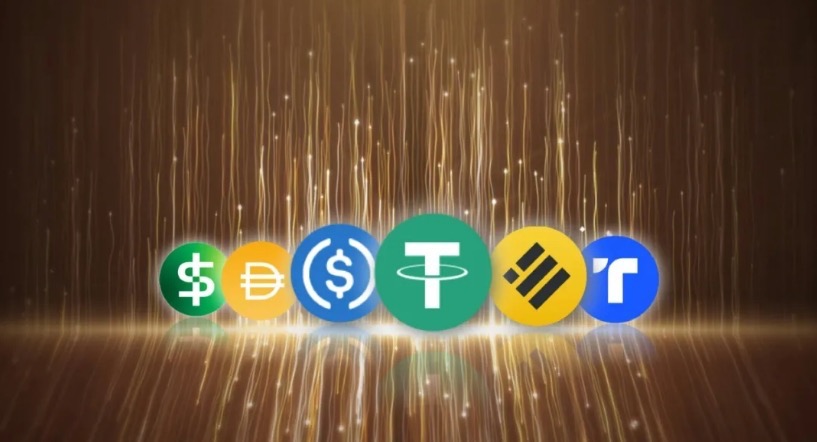Web3 Lawyer: MakerDAO Brand Upgrade, Disillusionment with DeFi and Decentralized Stablecoins?
曼昆区块链法律服务2024/08/30 03:11
By:曼昆区块链法律服务
The cryptocurrency world cannot do without stablecoins, just like the West cannot do without Jerusalem.
Stablecoins serve as a bridge between traditional finance and the crypto world, providing a stable store of value and medium of exchange for the volatile cryptocurrency market. Whether it is cross-border transfer, smart contract trading, or the operation of DeFi projects, stablecoins are playing an irreplaceable role and have become an indispensable part of the cryptocurrency circle. According to the latest data from Coin Metrics Network Data Pro, the total supply of stablecoins worldwide is close to $161 billion, which is once again close to the highest level in history. According to data released by overseas cryptocurrency trading institution HashKey Group, the quarterly stablecoin transfer volume has increased seventeen times in the past four years, from $17.40 billion in the second quarter to $4 trillion. On July 17, 2024 alone, the total trading volume of the entire global stablecoin market reached $87 billion, accounting for 91.7% of the total cryptocurrency market trading volume. The largest trading volume of the stablecoin was USDT, reaching 83.3%.

However, what many cryptocurrency users overlook is that commonly used stablecoins such as USDT are published by centralized institutions and heavily rely on their daily management and operation, which is no different from traditional bank printing and issuing coins. Although decentralized stablecoins (such as DAI) were once the "hope of the whole village" in this field, the recent upgrade of MakerDAO to Sky Protocol, the launch of the new stablecoin USDS, and the introduction of freezing functions have once again sparked debates about the ownership and decentralization of stablecoins, and even disillusionment with decentralized stablecoins.
Disillusionment with decentralized stablecoins?
MakerDAO used to be a symbol of the decentralized ideal in the DeFi field, and its launched DAI is a stablecoin that is not centrally controlled. However, with the launch of USDS, this ideal seems to be being challenged.
According to reports, USDS may introduce a freezing function similar to centralized stablecoins USDT and USDC. Under certain circumstances, the publisher or related governance entity of USDS can freeze users' funds, which is obviously "contrary" to the original intention of decentralization.

In the traditional financial system, banks and governments have the power to freeze accounts, usually to combat crime or respond to emergencies. However, when this freezing function is introduced into stablecoins, it will force stablecoin holders to face an uncertain future - their funds may be locked on the chain by a centralized institution far away at any time.
With the popularity of blockchain technology, governments around the world are increasingly strict in regulating encrypted assets. For example, USDT (Tether), as the world's largest and most widely used stablecoin, often cooperates with regulatory agencies to freeze or seize USDT assets in certain specific wallet addresses. For example, in 2023, Tether froze millions of dollars worth of USDT, which were related to certain criminal activities. In an official statement, Tether clearly stated: "We cooperate with global regulatory and law enforcement agencies in appropriate circumstances to combat and prevent criminal activities." The technical principle of this function is based on the control permission of smart contracts. Tether retains the "blocklist" function permission for USDT contracts, which can add certain addresses to the blocklist and prevent the transfer or redemption of USDT in these addresses.

The designer of USDS claims that the freezing function is to prevent risks and ensure compliance. However, this also raises a fundamental question: if a decentralized stablecoin can be remotely controlled, and this centralized control requires users to rely on the goodwill and compliance of the publisher to some extent, rather than completely controlling their own assets. |
So, what is the difference between it and the centralized currency in the traditional financial system?
Does DeFi still have a future?
The brand upgrade of MakerDAO has caused a lot of concern for friends in the DeFi community. After all, the core concept of DeFi has always been to achieve financial services without intermediaries through smart contracts and blockchain technology, thus providing users with a free and open financial system. However, the freezing function of USDS and similar compliance measures have to some extent shattered this ideal and cast a shadow over the future of DeFi.

Firstly, this incident shows that
under the regulatory pressure of the real world, decentralized financial projects also have to make compromises. Although the original intention of decentralization is to reduce dependence on traditional financial intermediaries, with the mainstreaming of cryptoassets, the regulatory requirements of governments around the world have become increasingly strict. In order to survive within the regulatory framework, DeFi projects may have to find a balance between decentralization and compliance. In the future, more projects may take similar measures for compliance, leading to the gradual evolution of the DeFi field into a "pseudo-decentralized" market dominated by a few large companies, thus losing its original innovation vitality and inclusiveness, and even losing the original meaning of DeFi.
Secondly,
the freeze function and compliance compromise of USDS may lead to further division in the DeFi community. Some users may accept such a compromise, believing that it is the only way for DeFi to go mainstream and achieve large-scale adoption; while others may see it as a betrayal of the decentralized ideal, choosing to turn to more decentralized projects, or even completely abandon DeFi. As a result, the DeFi ecosystem may become more complex and diverse, but also more susceptible to division and internal friction.
Finally, in the long run,
this event may prompt deeper innovation and change in the DeFi field. On the one hand, the project team may explore new technical solutions that can meet compliance requirements while maintaining decentralization as much as possible; on the other hand, users may pay more attention to truly decentralized projects, pushing this field towards a more pure decentralization direction. In any case, whether DeFi has a future depends on how the industry responds to this crisis and finds a new balance between compliance and decentralization.
As a practitioner in the Web3 industry, Lawyer Hong Lin's simple view is that if mainstream DeFi projects want to meet the increasingly strict global regulatory requirements, they will inevitably introduce centralized mechanisms such as USDS with remote freezing functions. Although this design can meet the requirements of regulatory authorities, it is somewhat contrary to the original intention of the birth of Bitcoin. Perhaps future encrypted assets will continue to compete with each other. If you are pragmatic and compromise, you can hold compliant encrypted assets. If you really want to master your own encrypted assets, perhaps Bitcoin (BTC) is a better choice.
0
0
Disclaimer: The content of this article solely reflects the author's opinion and does not represent the platform in any capacity. This article is not intended to serve as a reference for making investment decisions.
PoolX: Locked for new tokens.
APR up to 10%. Always on, always get airdrop.
Lock now!
You may also like

Sui (SUI) Soars Following Key MA Breakout – Can Ondo (ONDO) Do the Same?
CoinsProbe•2025/04/24 23:45

Has PEPE’s Comeback Begun? Familiar Fractal Setup Signaling an Upside Move
CoinsProbe•2025/04/24 23:44

JasmyCoin (JASMY) Mirrors Past Bullish Breakout Setup — Is a Major Move Ahead?
CoinsProbe•2025/04/24 23:44

Trending news
MoreCrypto prices
MoreBitcoin
BTC
$93,200.1
+0.37%
Ethereum
ETH
$1,767.56
-0.44%
Tether USDt
USDT
$1
+0.02%
XRP
XRP
$2.18
-0.36%
BNB
BNB
$604.71
+0.03%
Solana
SOL
$151.25
+1.73%
USDC
USDC
$1.0000
+0.01%
Dogecoin
DOGE
$0.1802
+3.54%
Cardano
ADA
$0.7105
+3.76%
TRON
TRX
$0.2437
+0.15%
How to sell PI
Bitget lists PI – Buy or sell PI quickly on Bitget!
Trade now
Become a trader now?A welcome pack worth 6200 USDT for new Bitgetters!
Sign up now